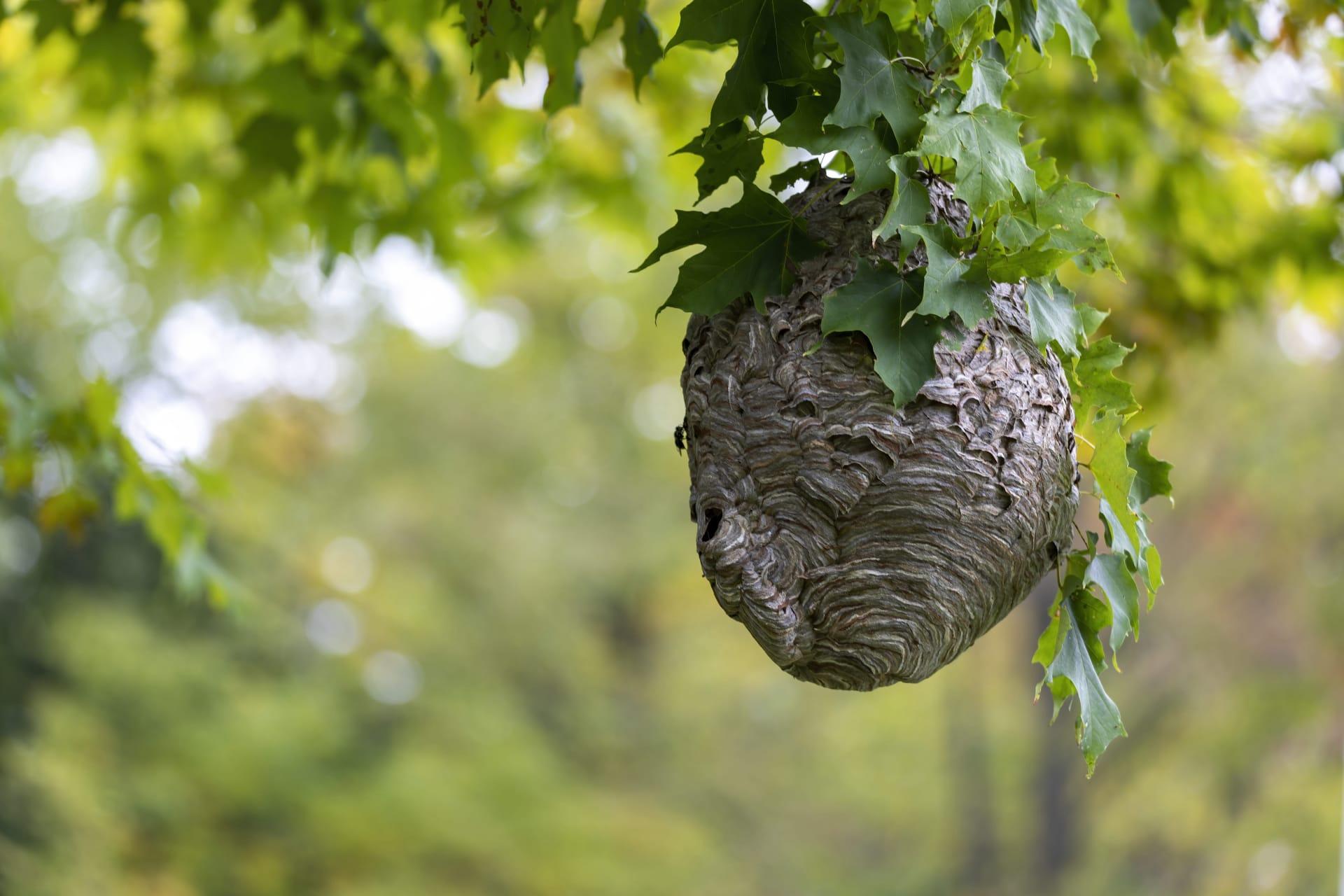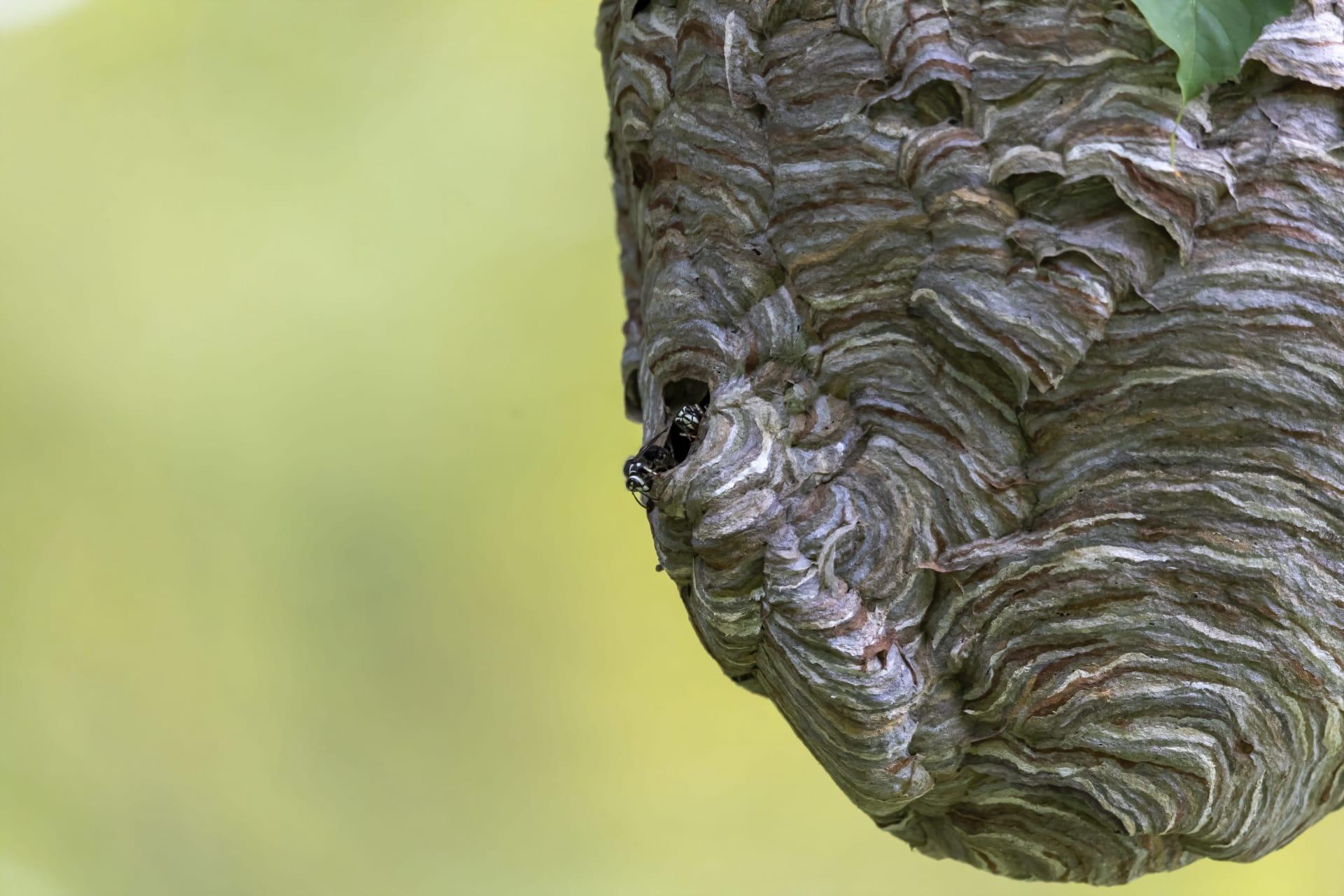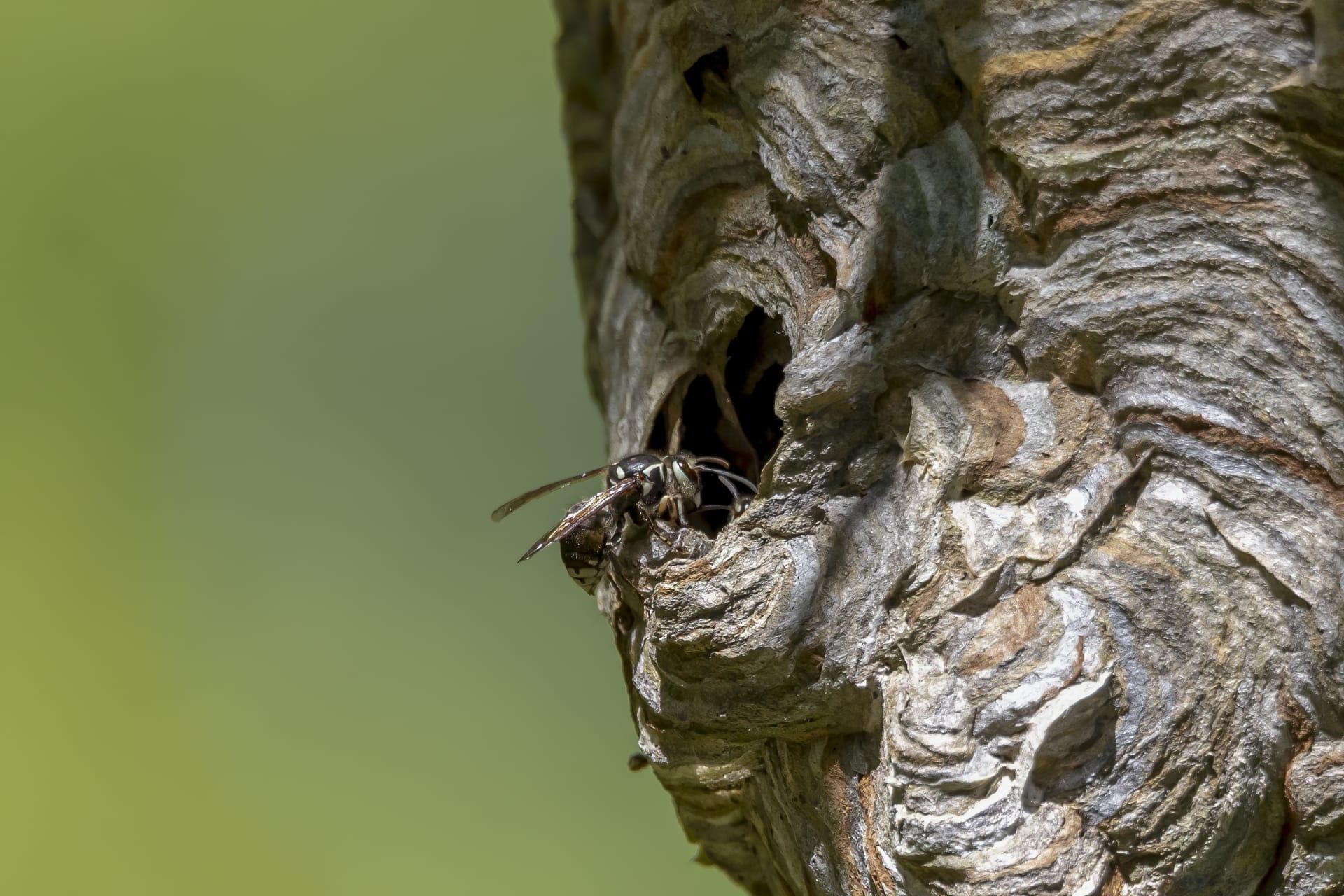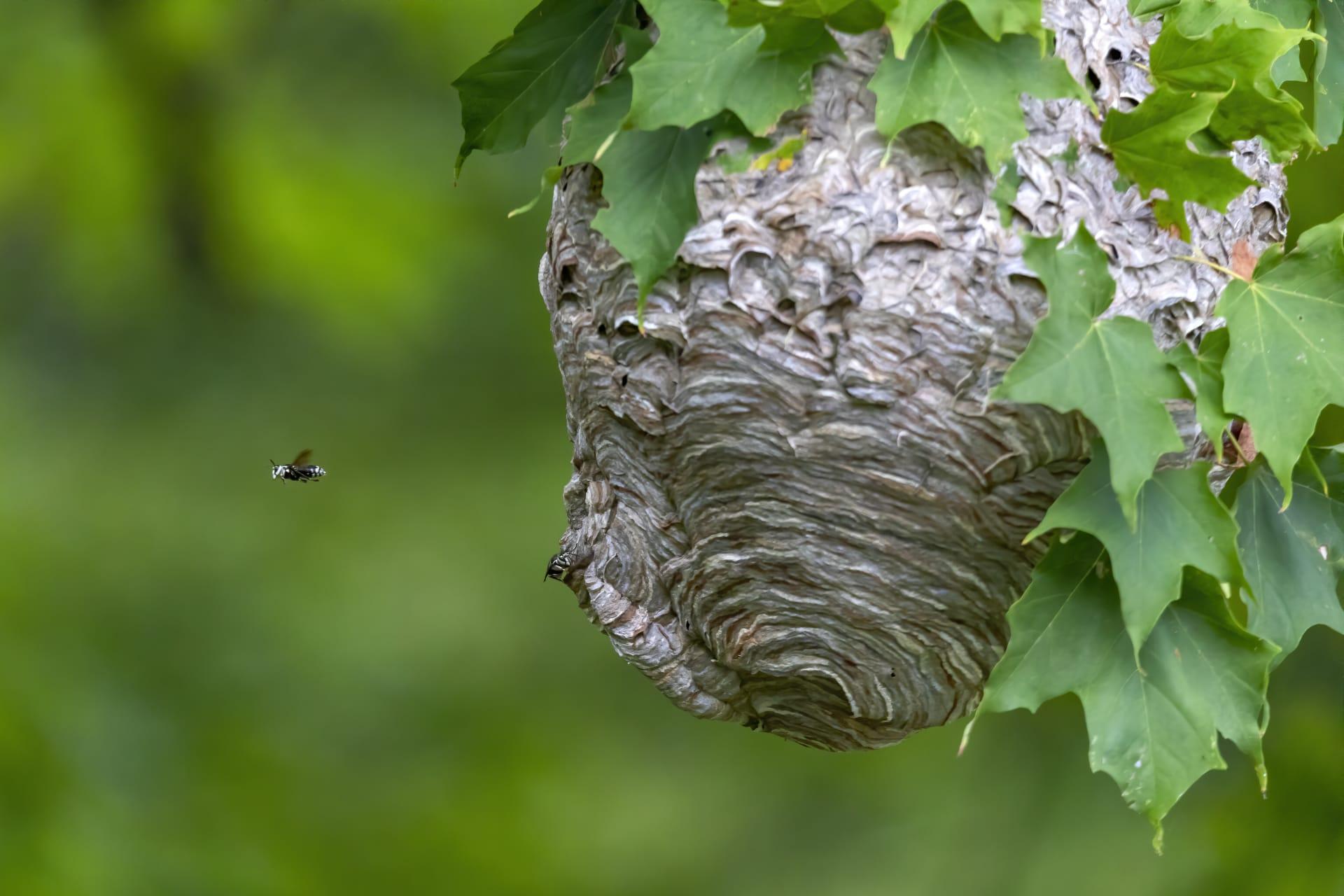Bald Faced Hornet
- Home /
- Mini Encyclopedia /
- Animal /
- Bald Faced Hornet
1
The Bald-Faced Hornet, scientifically known as Dolichovespula maculata, belongs to the family Vespidae in the order Hymenoptera, which also includes wasps and bees. This species is not a true hornet; it's actually a type of yellowjacket wasp. The name 'bald-faced' refers to its predominantly white face, a distinctive feature setting it apart from other wasps. Its body is characterized by a black and white color pattern, quite different from the typical yellow and black of most wasps.
Bald-Faced Hornets are widely distributed across North America. Their range extends from Canada down through the United States, with a particular prevalence in forested areas. These hornets are adaptable and can be found in both rural and urban environments, often building their large, paper-like nests in trees, shrubs, or occasionally on buildings. The nests, often compared to a football in shape and size, are constructed from chewed wood fibers mixed with saliva.

2
Question: Is the Bald-Faced Hornet more aggressive than other wasp species?
Answer: Contrary to popular belief, Bald-Faced Hornets are not overly aggressive compared to other wasps. They become defensive primarily when their nest is threatened. These hornets have a less aggressive temperament when away from their nest. However, when provoked, especially near their nest, they can become quite aggressive and can sting repeatedly. Unlike bees, Bald-Faced Hornets don't lose their stingers, so they can sting multiple times, making them formidable defenders of their colony.

3
Bald-Faced Hornets employ several survival strategies that are fascinating. Firstly, they are known for their unique nest-building skill. They chew wood to create a papery substance, using it to construct large, enclosed nests that protect the colony from predators and harsh weather. These nests can house hundreds of hornets and are often built in sheltered locations like high in trees or on the side of buildings. Their choice of nesting sites often minimizes the risk of disturbance from predators and humans.
Another key survival strategy is their social structure. Bald-Faced Hornets live in colonies that consist of a single queen and many workers. The queen is the only one who reproduces. Workers, which are all female, are responsible for various tasks like foraging, nest construction, and colony defense. This division of labor within the colony enhances their efficiency in resource gathering and nest maintenance, crucial for their survival through different seasons.

4
In the ecosystem, Bald-Faced Hornets play several roles. They are considered important predators of other insects. By feeding on flies, caterpillars, and spiders, they help control these populations, which can be beneficial for agriculture and garden health. Their role as predators helps maintain a balance in the ecosystem, preventing overpopulation of certain species.
Bald-Faced Hornets also contribute to pollination. While they are not as efficient as bees, their foraging for nectar brings them into contact with flowers, facilitating the transfer of pollen. This incidental pollination can be beneficial to plant reproduction and biodiversity. Their role in the ecosystem highlights the importance of conserving such species, even those that might be seen as nuisances.

5
Film: "Hornets: The Conquerors of the Insect World" is a documentary produced in the United States in 2019. This film explores various hornet species, including the Bald-Faced Hornet. It provides insights into their life cycle, social structure, and the ecological impact they have. The documentary's stunning visuals and detailed observations offer a close-up view of these often misunderstood insects.
Book: "Winged Architects: Building with Bees and Wasps" by Sarah J. Arnold, published in the United Kingdom in 2020, includes a detailed chapter on Bald-Faced Hornets. Arnold delves into their nest-building techniques and social hierarchy, providing a comprehensive overview of their life and role in the ecosystem.
Book: "The Secret Lives of Wasps" by Richard Jones, released in the United States in 2021, is another excellent resource. It features a section on Bald-Faced Hornets, discussing their interactions with other species, their defensive strategies, and their importance in the natural world. Jones combines scientific research with engaging storytelling to shed light on these often-overlooked creatures.